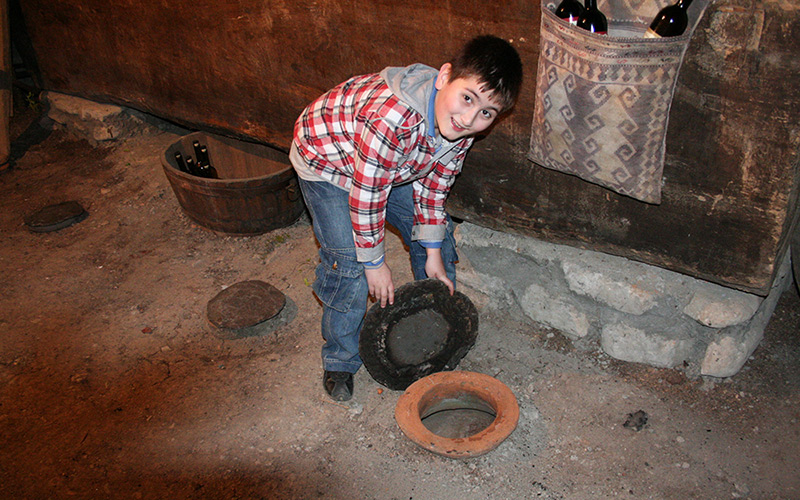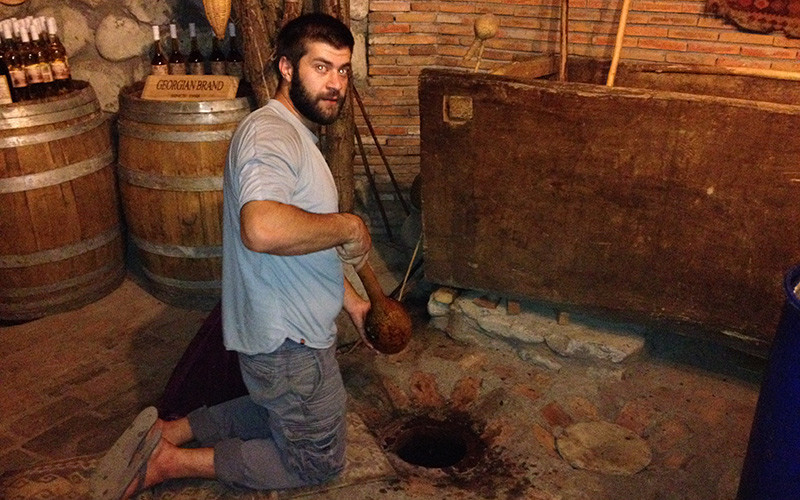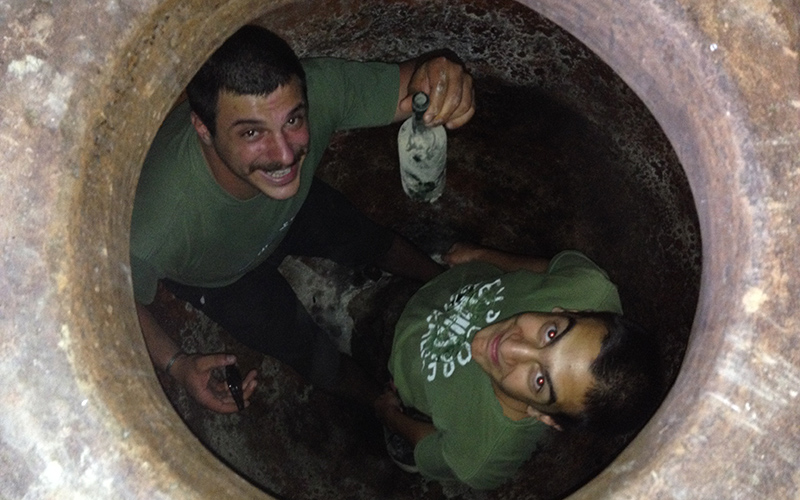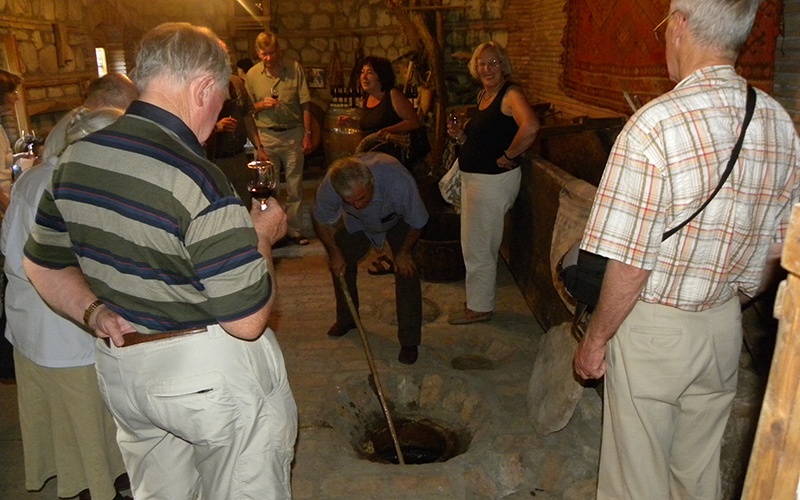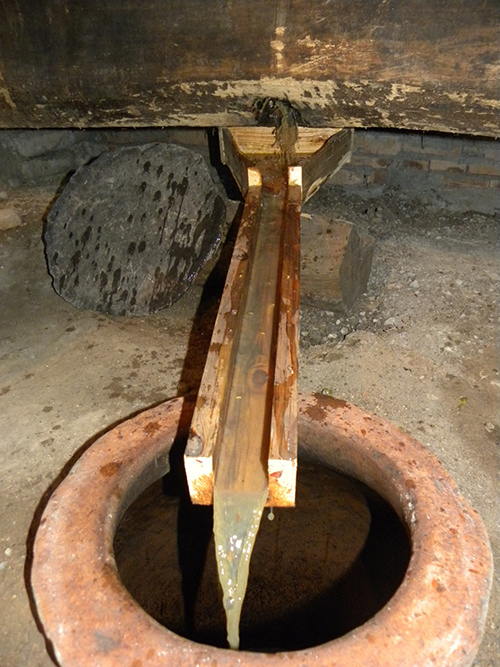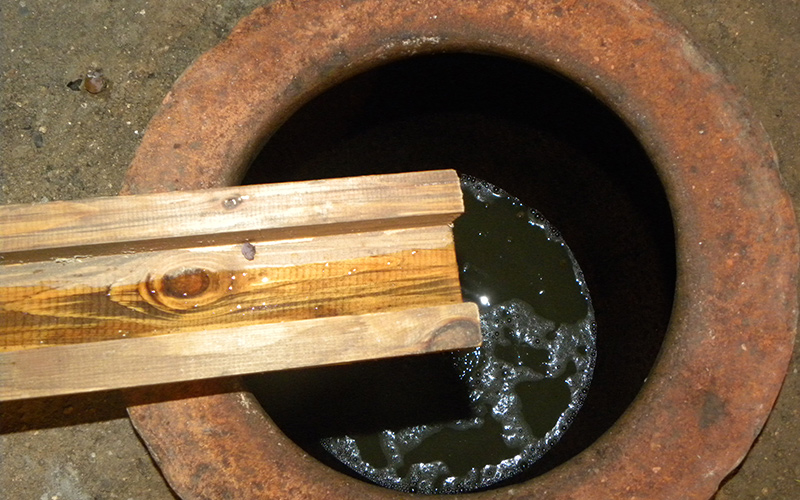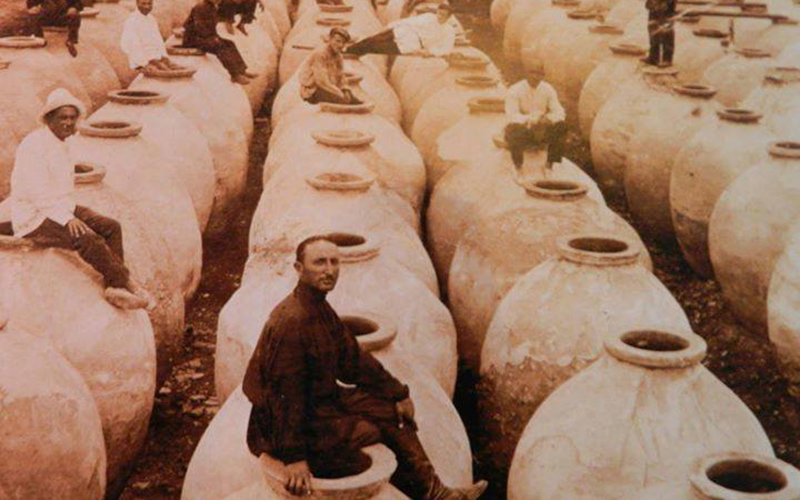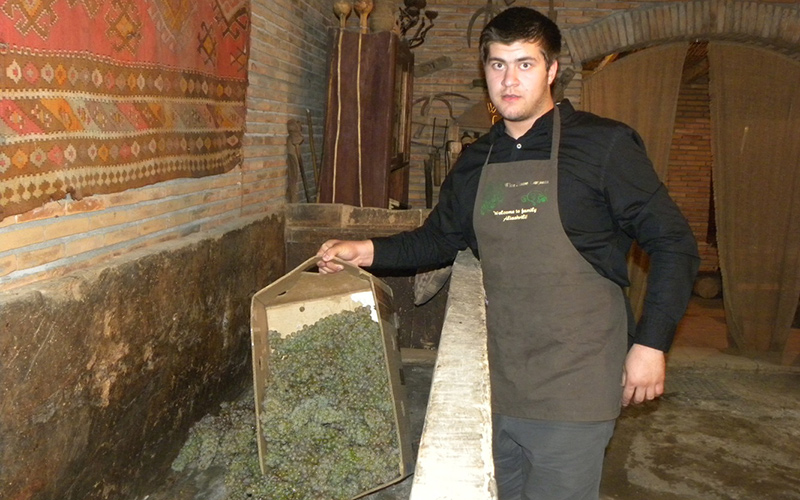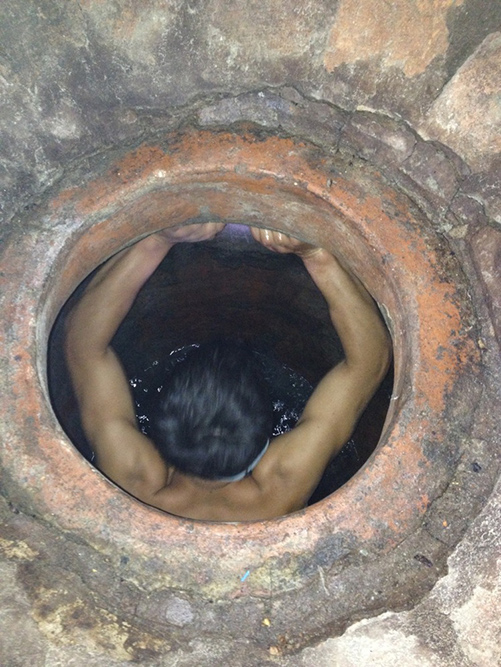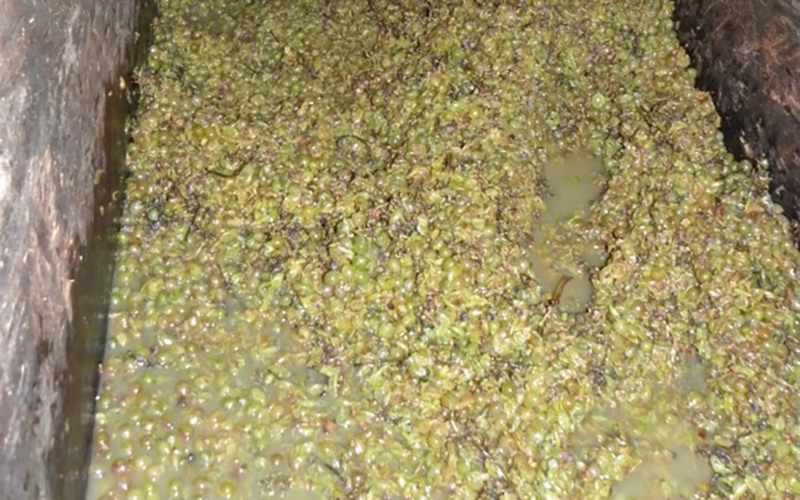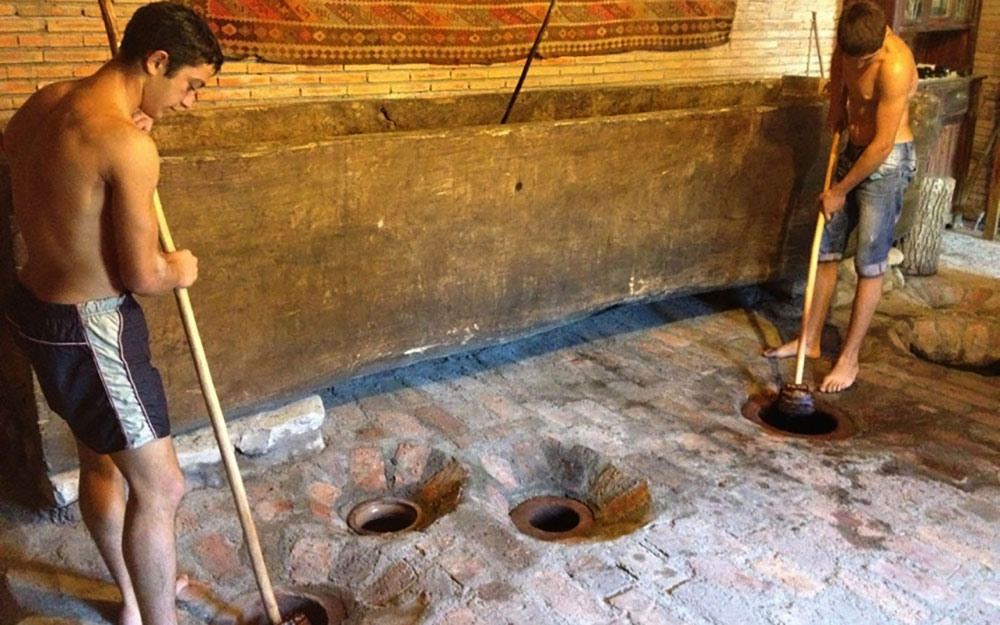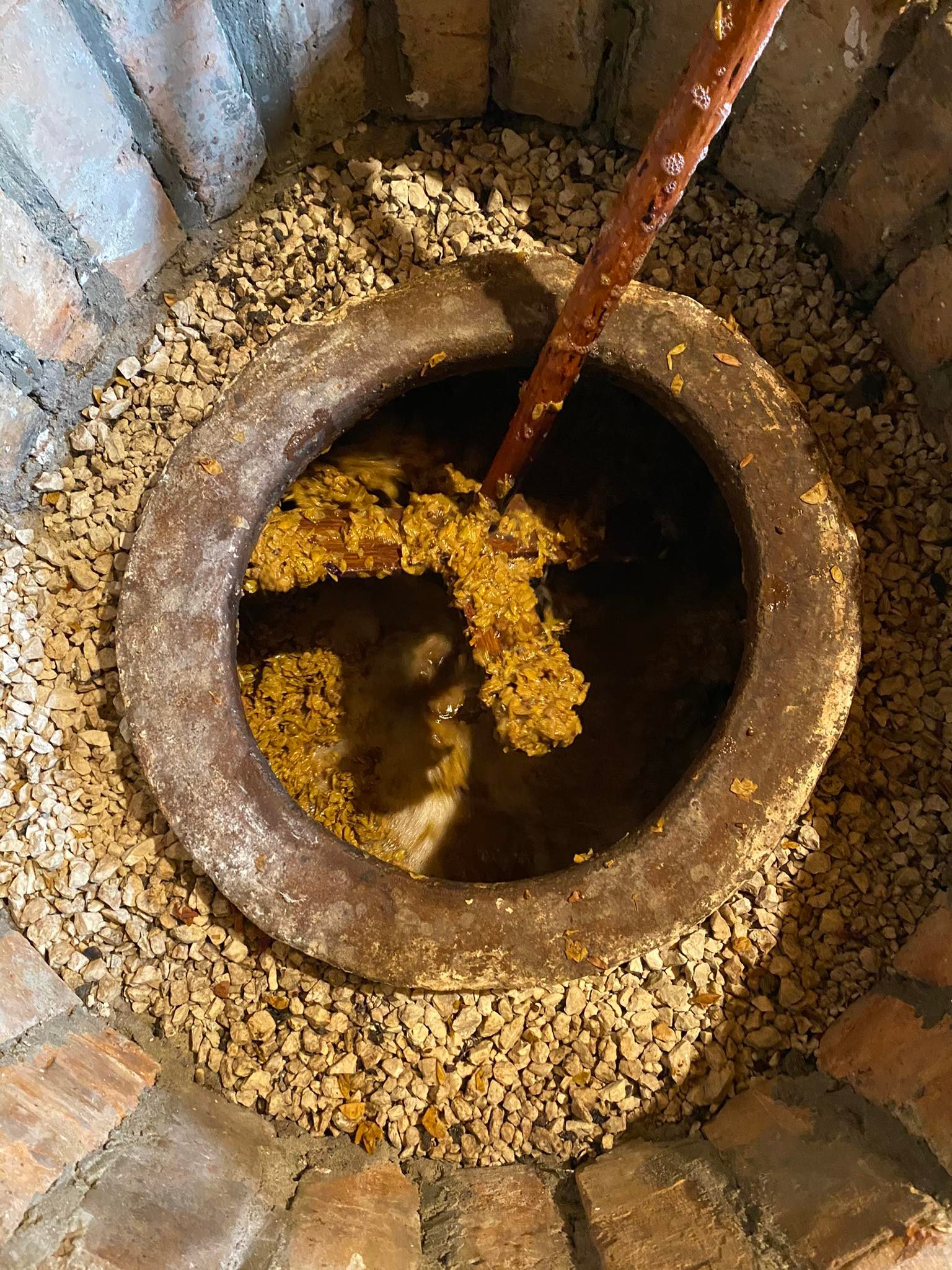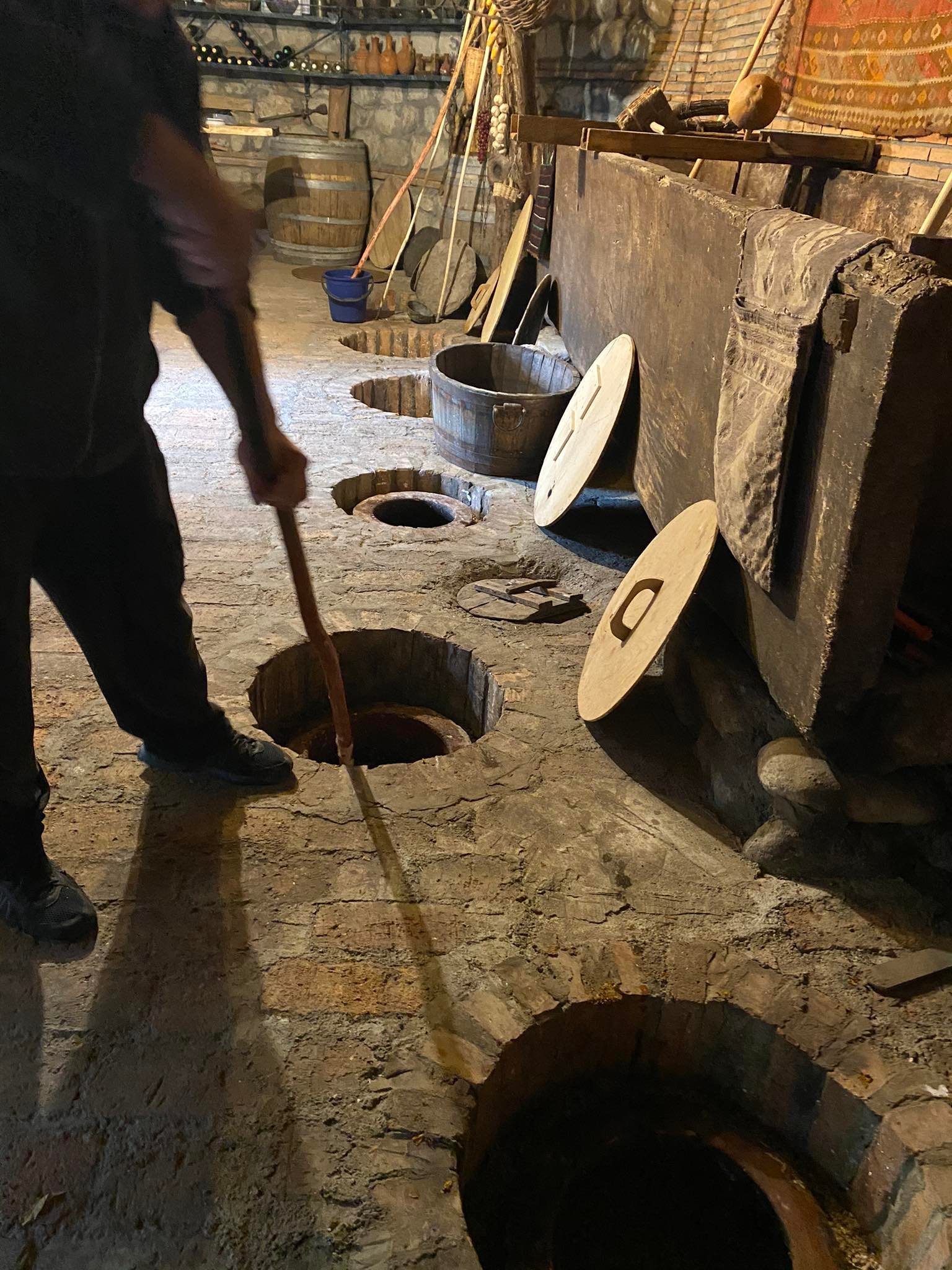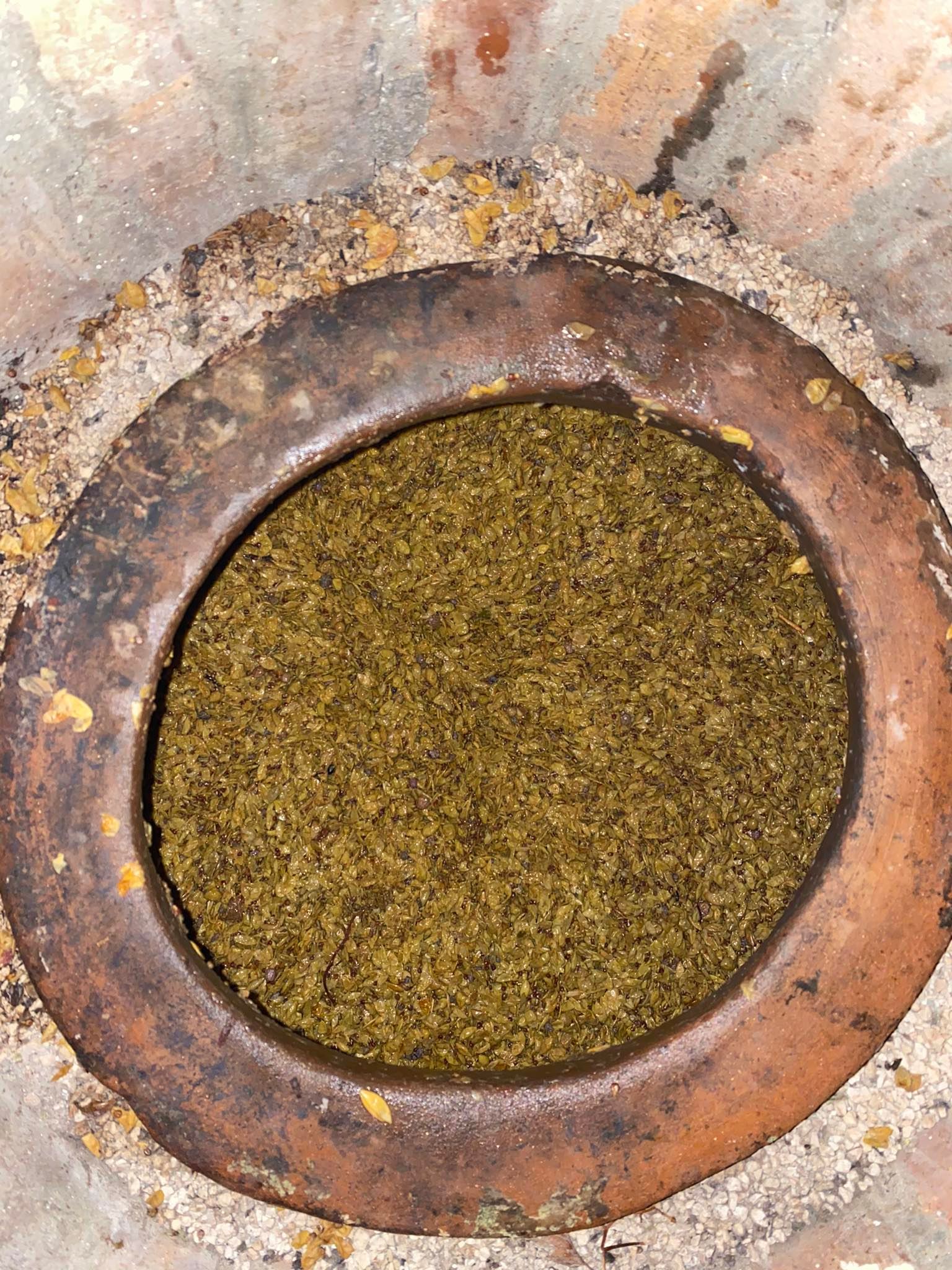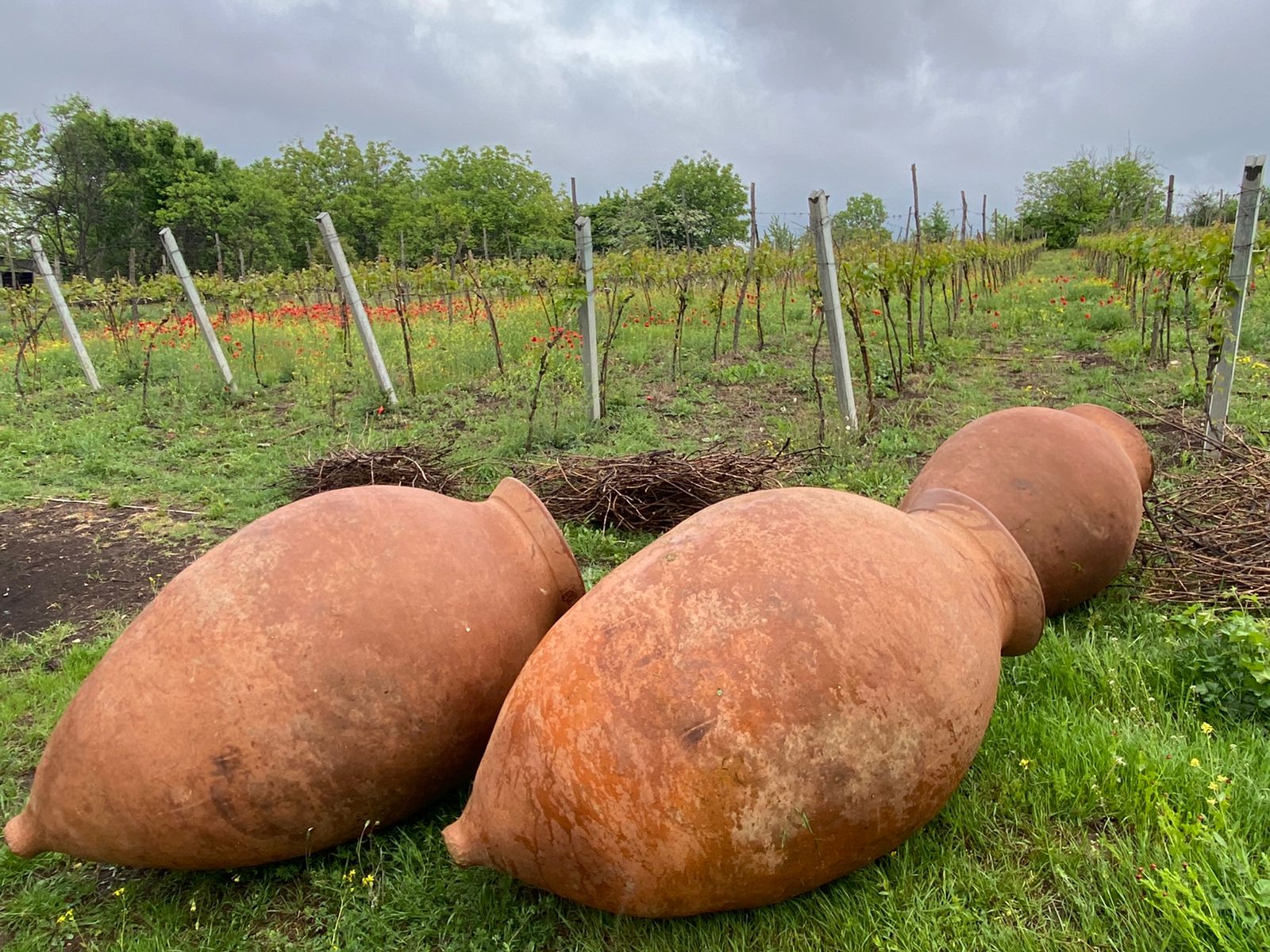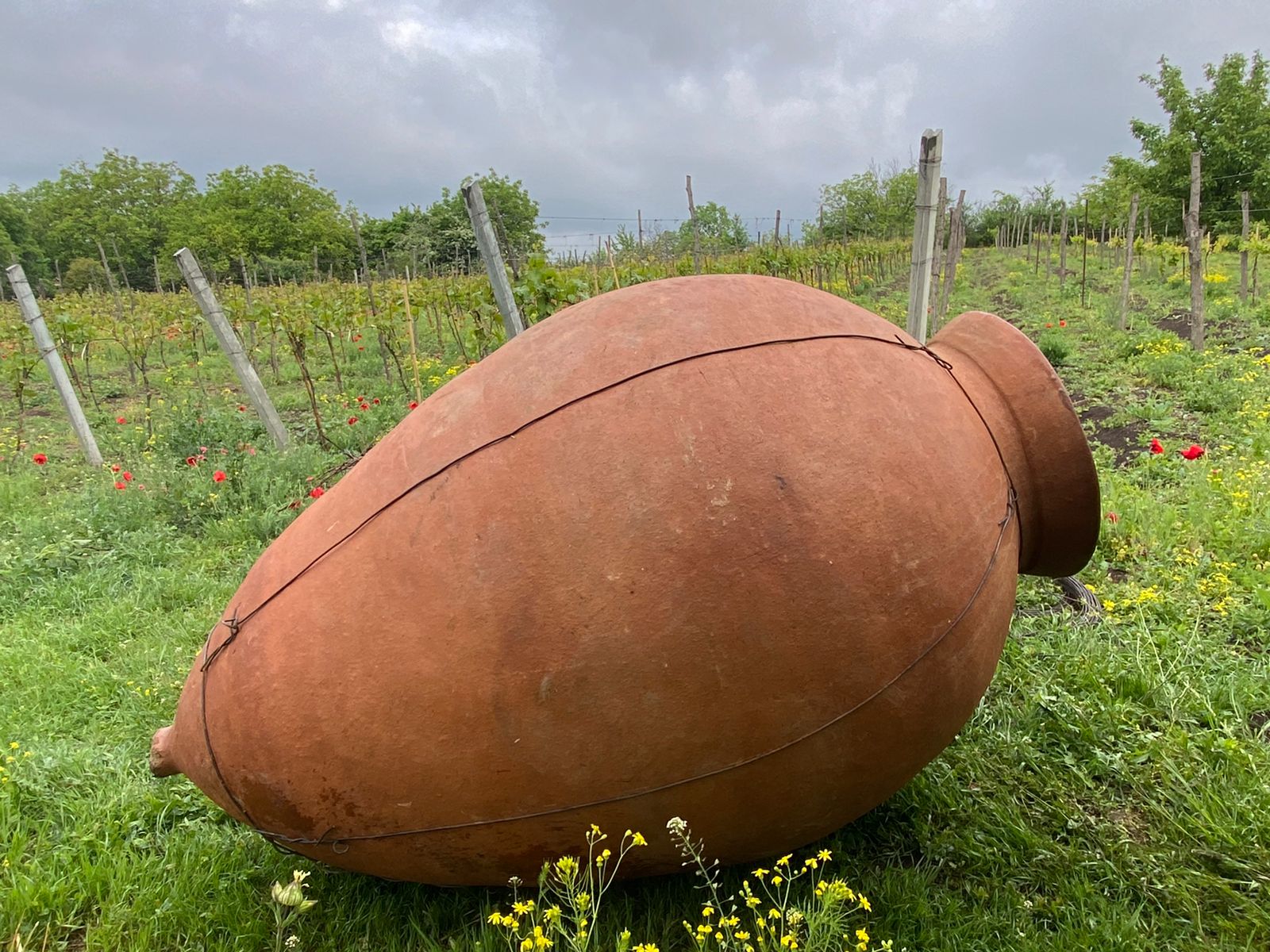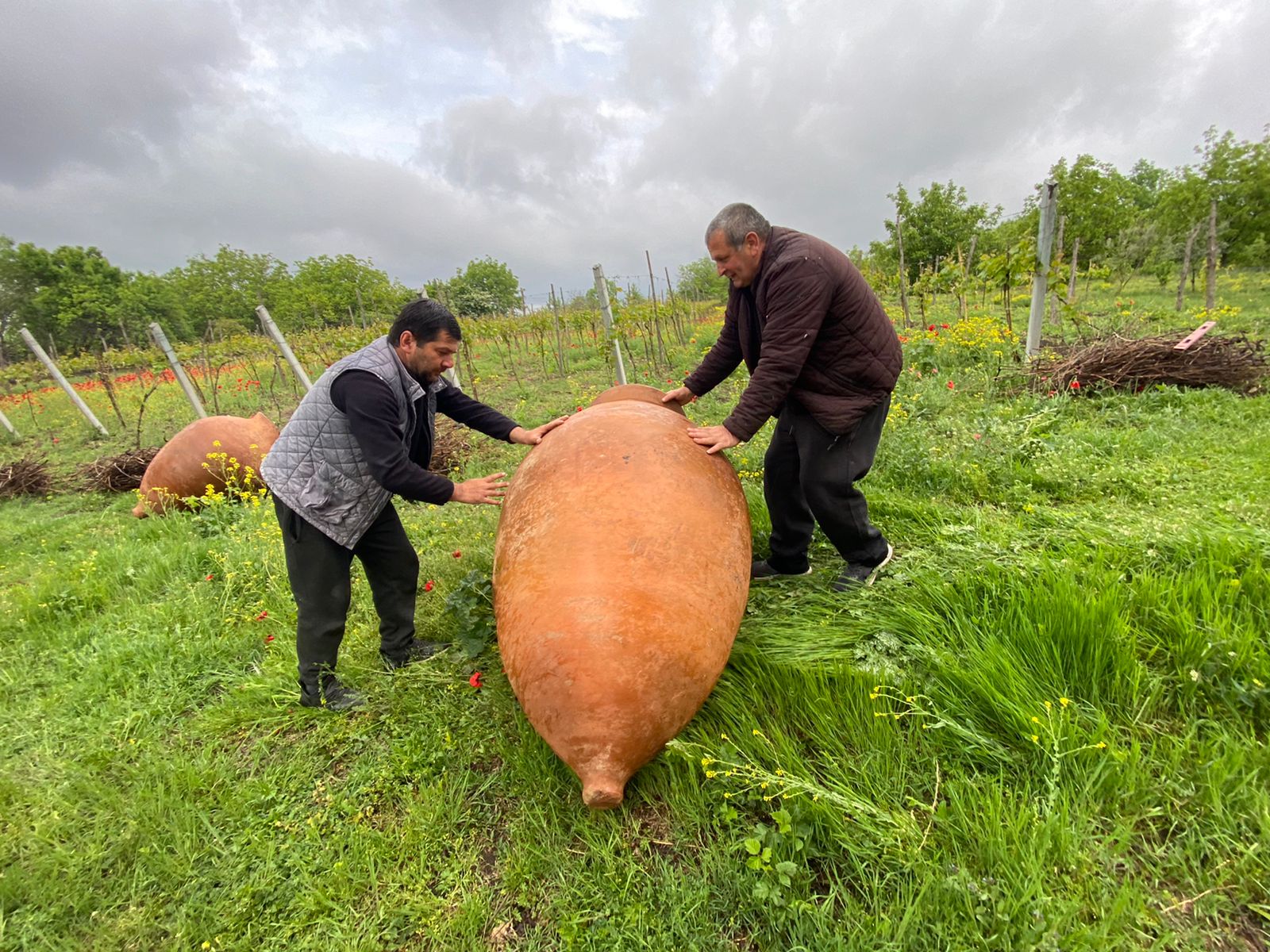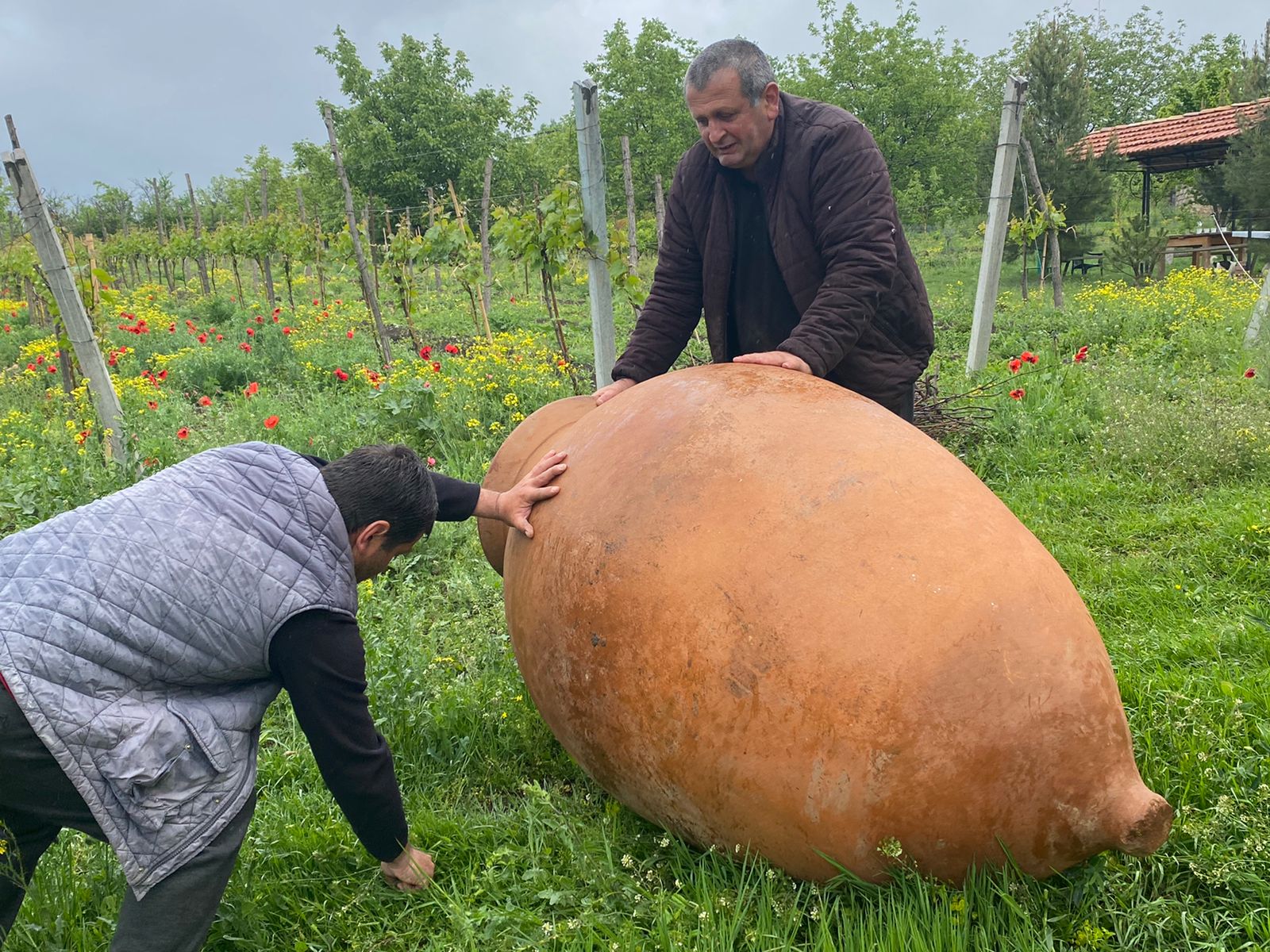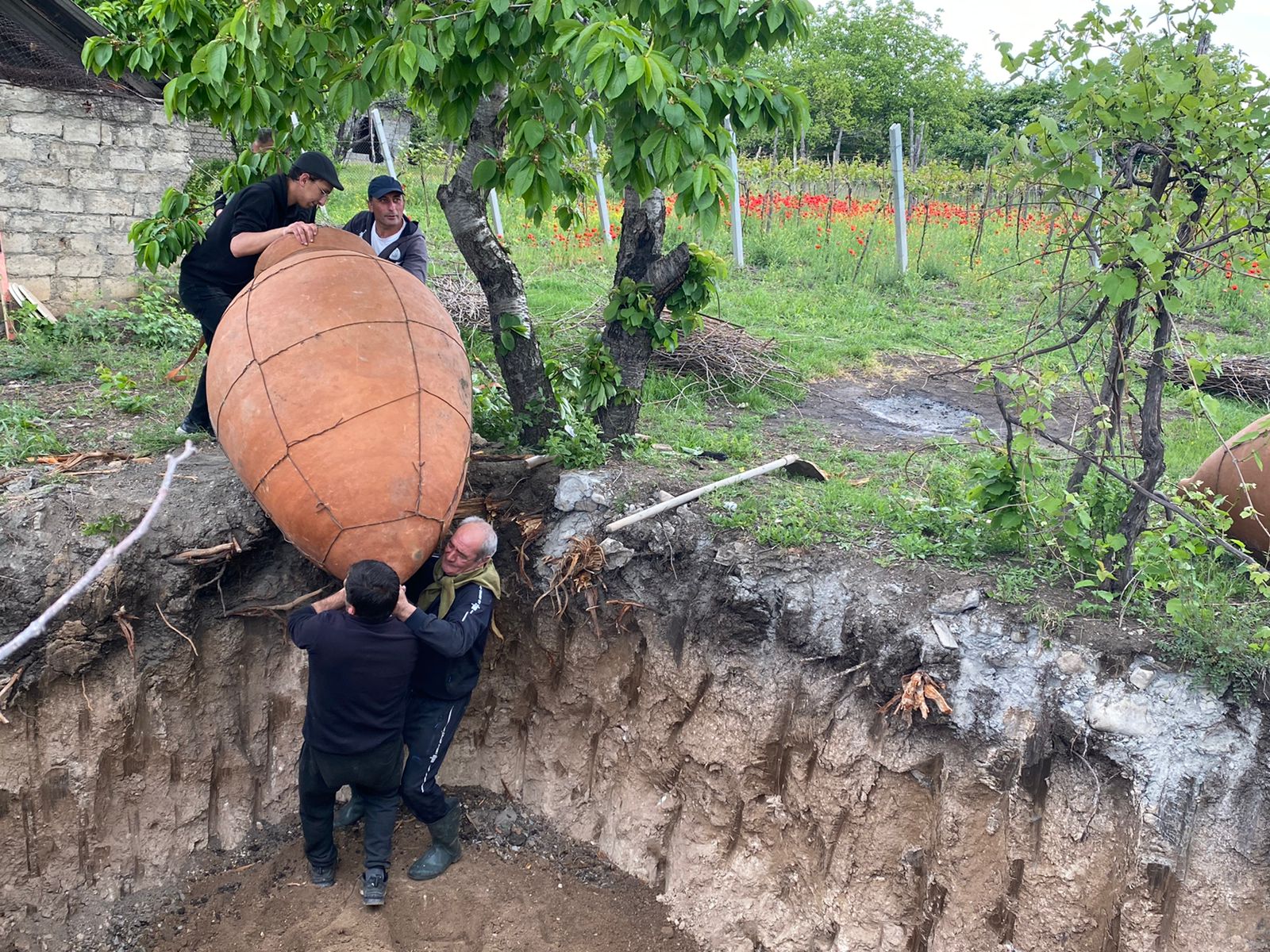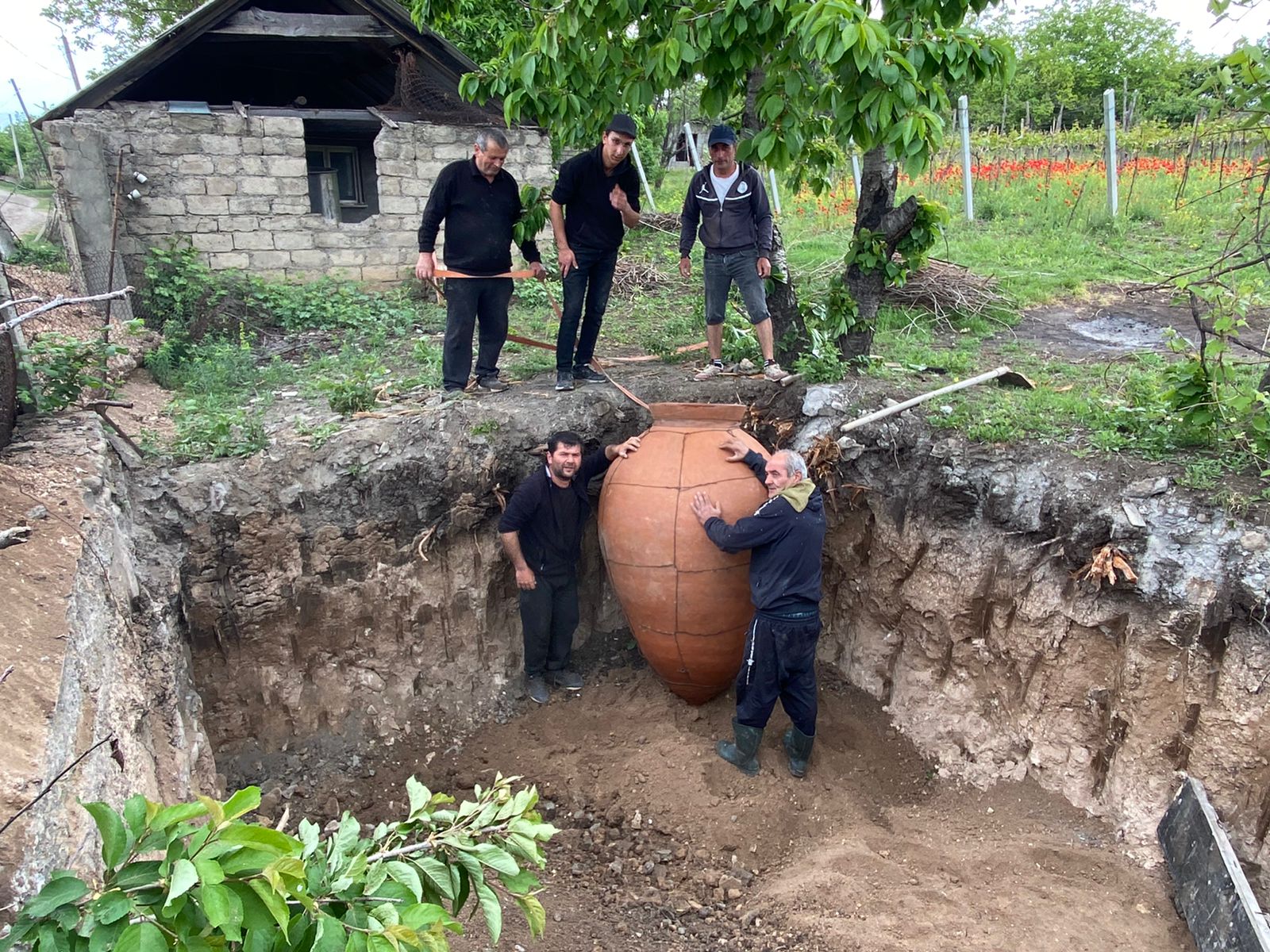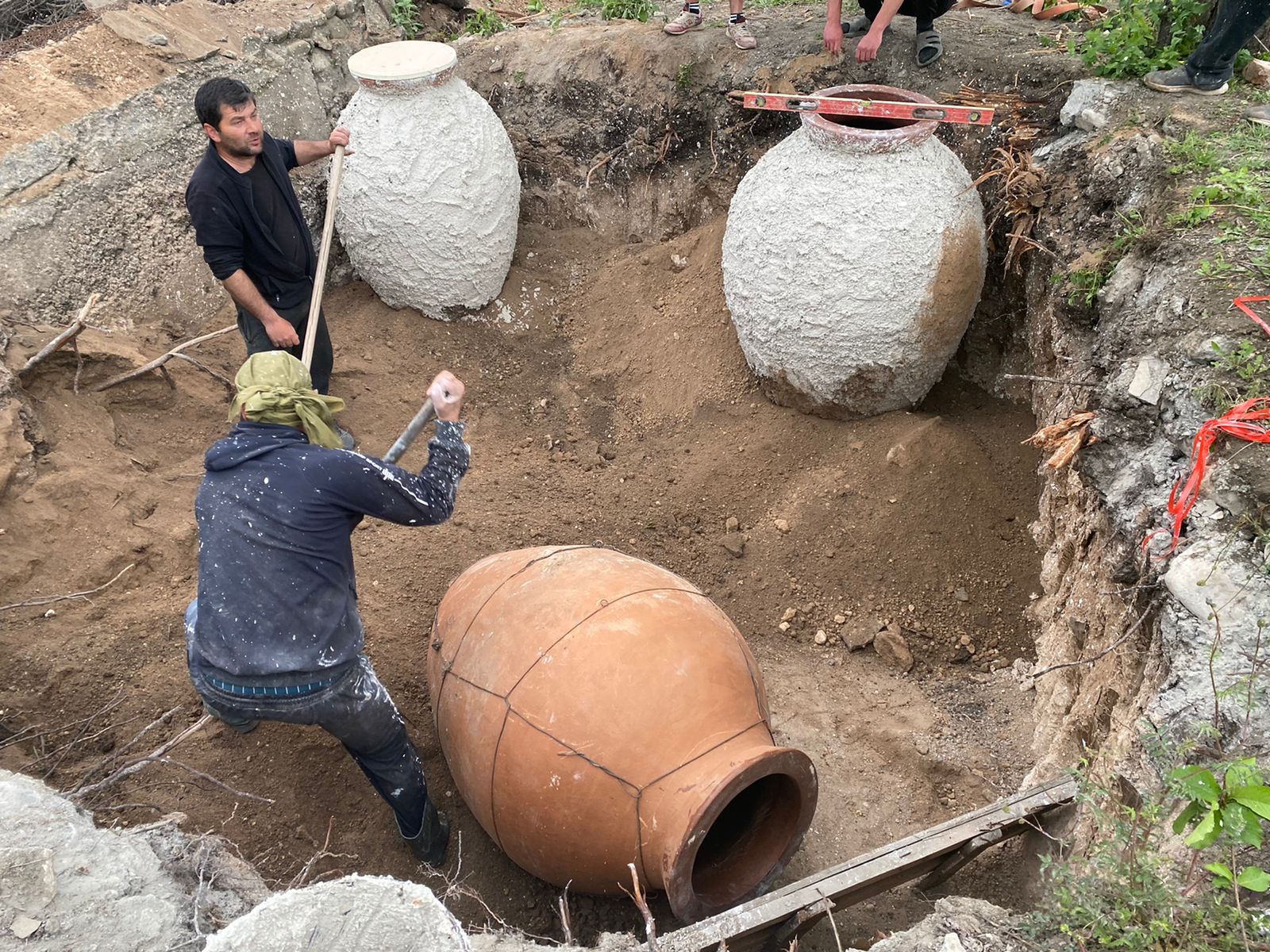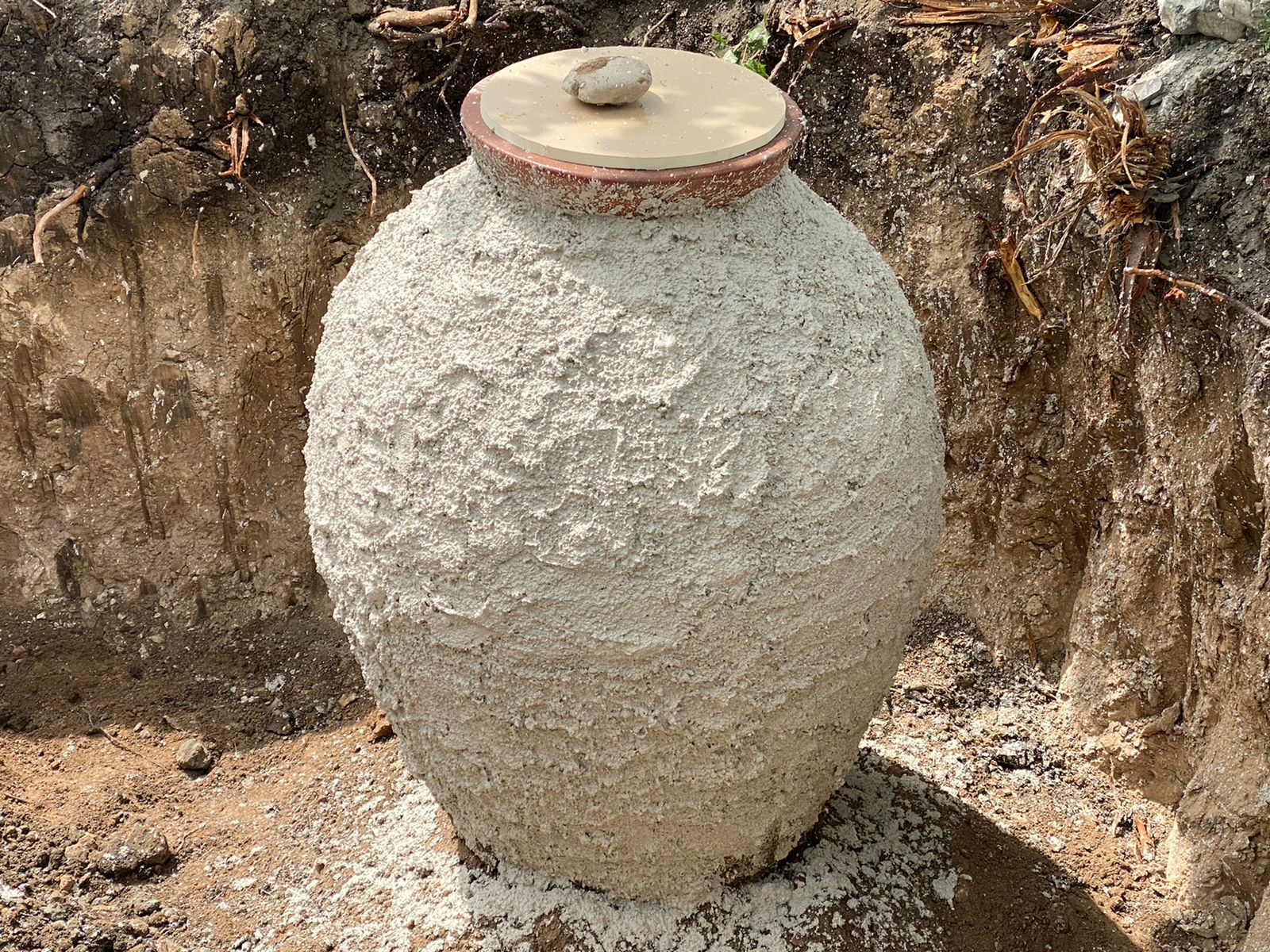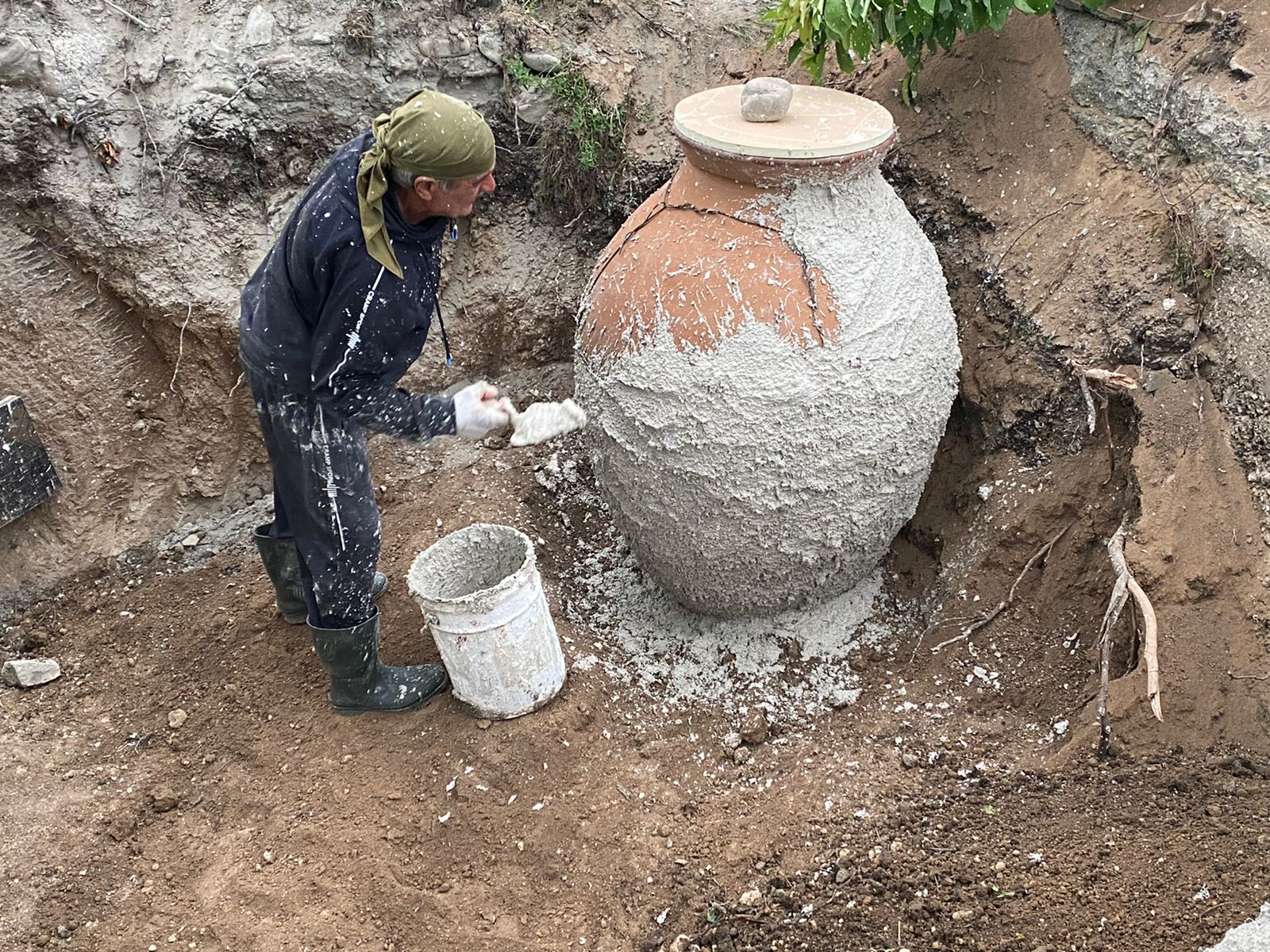KVEVRI
Foreword
Since ancient times Georgia has been known as a country of grapes and wine. Traditional Georgian wine is hardly imaginable without a qvevri. The history of making wine in traditional qvevri vessels has existed at least 8000 years and is till practiced today. Qvevri wine is unique for its rich chemical composition, its distinctive bouquet and taste and for its nutritional and curative qualities. The ancient Georgian traditional qvevri winemaking method is one of country’s cultural achievements and treasures. Wine has a crucial place in social interactions in Georgia, playing a role in the traditional hospitality of the country and facilitating friendship and good will.
Qvevri and Qvevri-making
Due to the uniqueness of ancient Georgian traditional qvevri winemaking method, the principles of producing and using vessels are very important. Qvevri is a traditional Georgian vessel used for making, ageing and storing wine. It is made of a type of clay historically used for qvevri-making in artisanal families according to traditional technology, these families possess the centuries-old knowledge of the ion of appropriate clay in their respective regions. Traditional places for qvevri making arevillages of Atsana (Guria), Mkatubani, Shrosha, Tqemlovana, Chkhiroula (Imereti), Vardisubani (kakheti). The vessel is buried in the ground, which guarantees an optimal temperature for the ageing and storage of wine and its egg-like shape favours the processes inside: the chacha (grape skins, stalks and pips) sinks to the bottom; the wine becomes enriched by its volatile and non-volatile elements; later wine is separated the latter and gets stabilized. Qvevri wine quality is also influenced by the quality of the qvevri cleaning process, which has to be done each year before making wine. In every village there are a few experienced qvevri cleaners. The cleaning process involves washing the vessel with herbal cleansers and water. Qvevris are traditionally disinfected with sulphur vapours. The internal surface is sometimes lined with beeswax, and the outer surface is traditionally covered with a lime-based mortar before burying.
Winemaking
The Qvevri winemaking tradition can be found throughout Georgia in rural as well as urban areas. Georgians consider it to be the most important attribute of their cultural identity. Traditional Georgian qvevri winemaking method is ancient, living culture and has changed little since its formation. The basic technological process consists of pressing grapes in satsnakheli (wine press), pouring the must and the Ch’ach’a (grape skins, stalks and pips) into a qvevri. The mixture fills the vessel to around 80-85%. As fermentation progresses, the mixture is stirred 4-5 times daily. When fermentation has finished the qvevri is filled with the identical mixture and sealed, then left to age for 5-6 months. The various qvevri winemaking methods were defined by factors such as soil or climatic conditions, the rich variety of endemic vines and differences between micro-zones.
a) The grape must is fermented, aged and stored in contact with its Ch’ach’a for 5-6 month (Eastern Georgia- “Kakhetian” method).
b) The grape must is fermented in qvevri with partial (2.5-3.0 %) addition of Ch’ach’a before removing the latter in November. The wine is left in the sealed qvevri to mature until spring (Western Georgia- Imeretian” method).
c) The crushed grapes are left the wine press for 4-5 days then the must is poured into a qvevri to continue fermenting and is left to mature until spring (Western Georgia, the Black Sea coast and Racha-Lechkhumi). Natural sparkling wines are thus produced in mountain areas. Each method involves alcoholic fermentation using natural yeasts without any additives. The qvevri facilitates the processes of fermentation and ageing with the minerals that are part of its composition. This has a favourable effect on the taste and quality of the wine. By being placed underground, grape must bursting with the sun’s energy absorbs the energy of the soil and becomes part of nature. The Georgian traditional method of qvevri winemaking is found all over the country, especially in regions like Kakheti, Kartli, Imereti, Racha-Lechkhumi, Guria, Abkhazeti, Samegrelo, Meskheti, Achara and the Tskhinvali region. Even in highland regions vines do not grow, grapes are delivered lowlands to make wine. Knowledge and experience of winemaking is passed down through generations informally with direct involvement in the processes the family, neighbors, friends and relatives all join in harvesting and winemaking.
Qvevri wine as foundation of cultural identity
The Georgian qvevri winemaking tradition is a clear example of how important intangible heritage is for creating and maintaining positive social interactions, and for the formation of cultural identity. Despite the fact that Georgia’s social and political environment has undergone several transformations in the last century, the tradition of qvevri making and winemaking using this unique vessel remains a key element of identity and reputation for Georgians. Wine cellars are still considered to be the holiest places in a family home. Traditionally, a sealed qvevri is opened for honoured guests, and families who make a good wine are respected by society. Georgian oral and musical folklore is abundant with masterpieces dedicated to vines and wine. The viticultural and vinicultural terminology is rich and diverse. Wine continues to play an important role in everyday life of Georgians-during secular and religious events, as well as recurring rituals.The everyday meals of Georgian are also occasions to partake of the family wine. The Georgian Orthodox Apostolic Autocephalous Church has played an important role in transmitting traditional knowledge of winemaking, especially as red wine is an inseparable attribute of the Liturgy. Traditional methods of winemaking continue to live on in centuries-old monasteries around the country, and many church communities (for example the monks of Alaverdi, Nekresi, Shavnabada and Martvili) are active in traditional winemaking. According to ancient chroniclers, Georgia was Christianized in the 4th century AD by the Cappadocian nun, Saint Nino, who made a cross of vine branches. In Georgia, the “tree of life” is traditionally represented as grape-bearing vine that also symbolizes the Virgin Mary . The 11th century polyphonic hymn “Thou art a vine” dedicated to the Virgin Mary remain very popular to this day.
Epilogue
As proof of its cultural significance, and in accordance with principles of Convention on Protection of Intangible Cultural Heritage of UNESCO, the status of National Monument of Intangible Cultural Heritage has been assigned to “The ancient Georgian tradition of Qvevri winemaking” in 2012.




